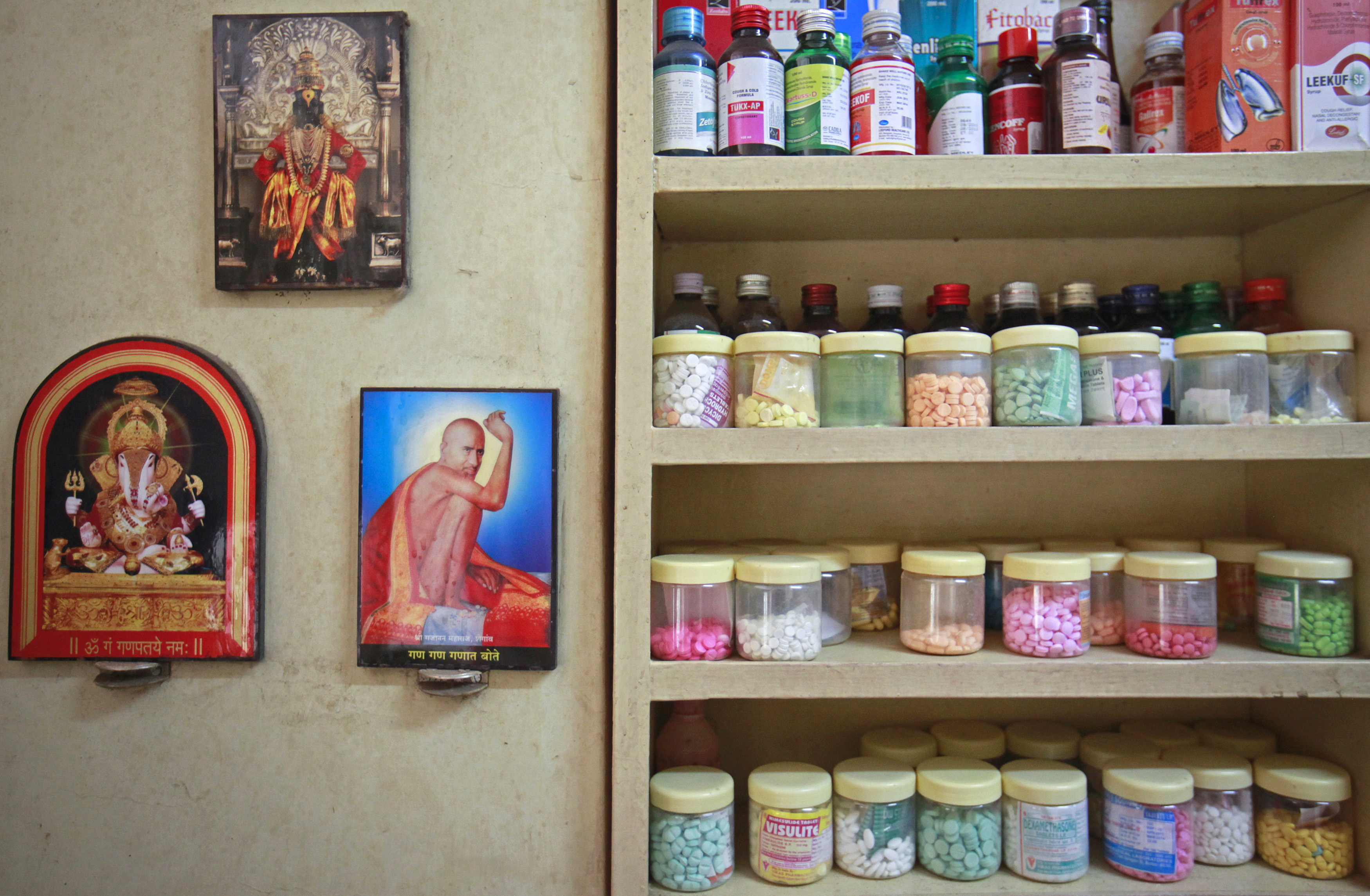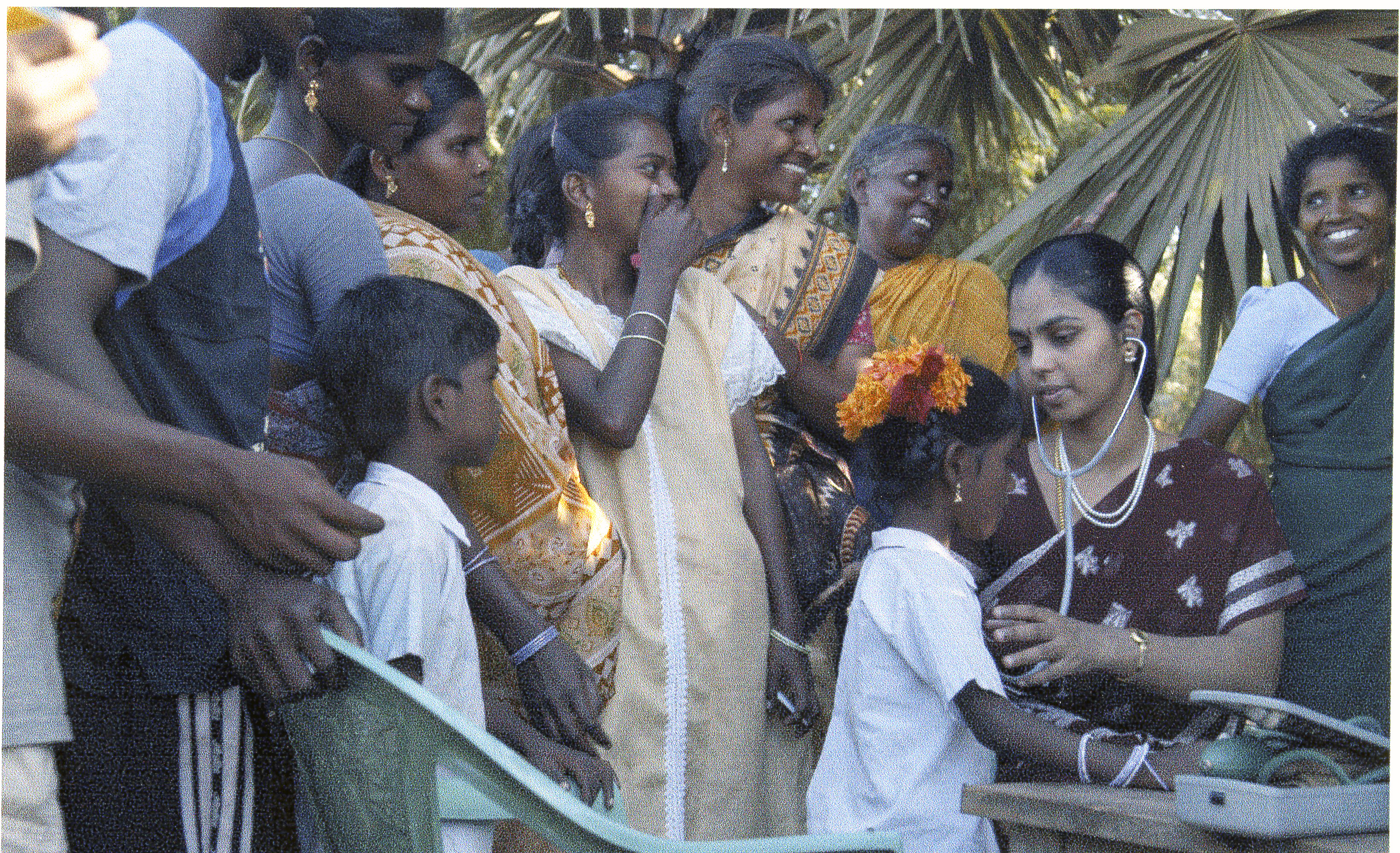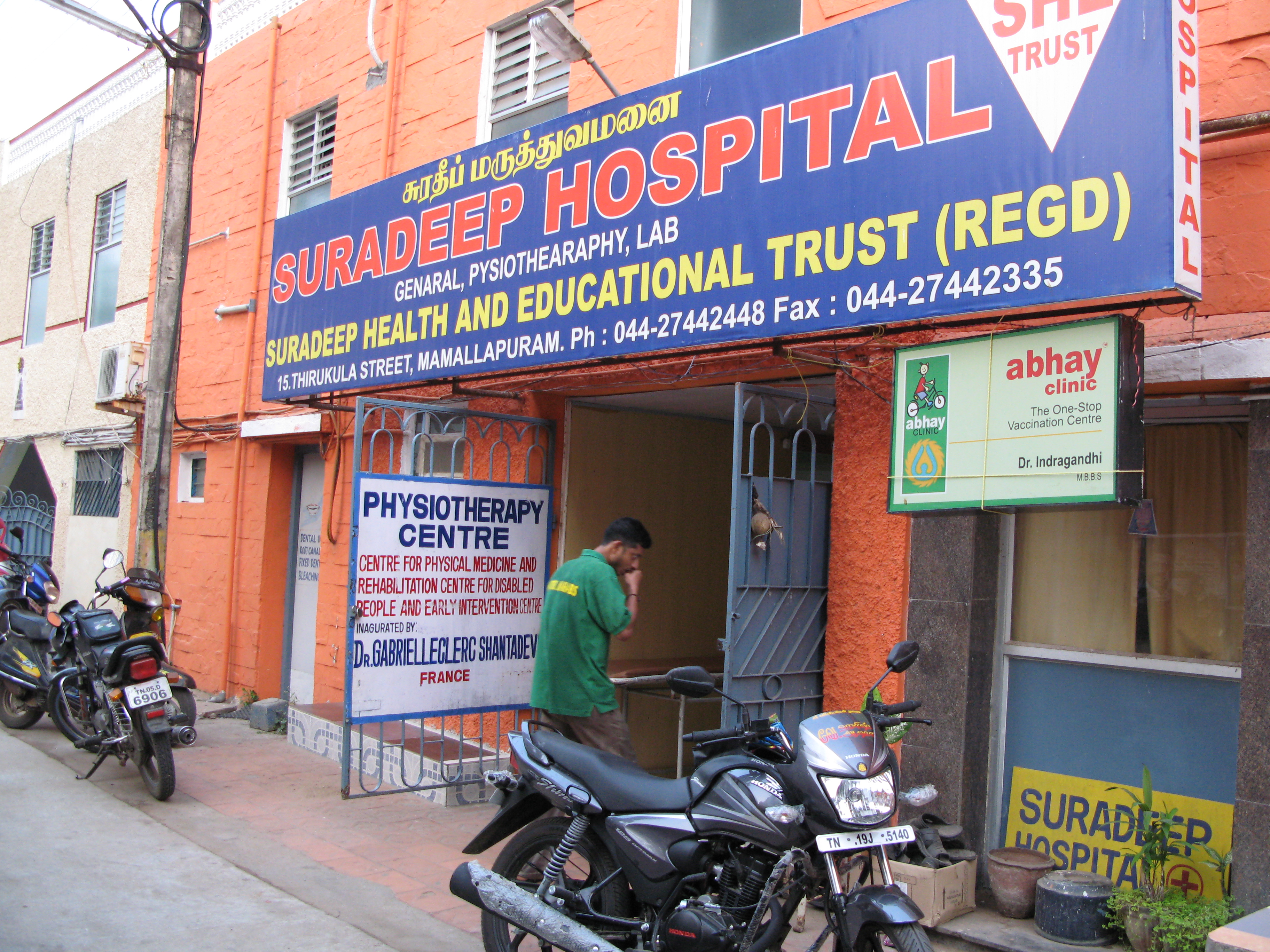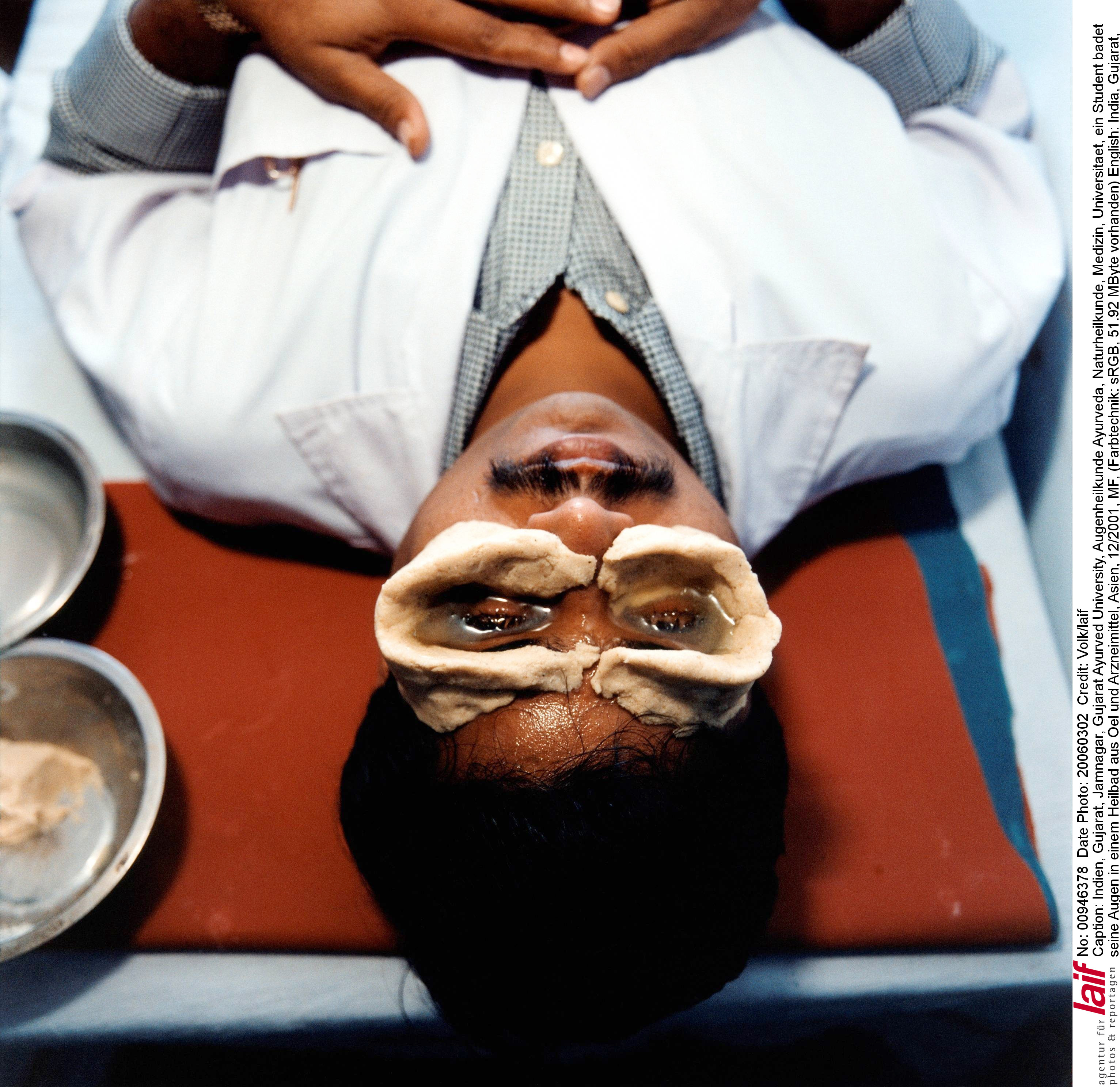Doing business in the developing world’s pharmacy

Traffic noise floods the busy waiting room at a public hospital in southern Mumbai, where it’s first-come, first-served. People of all ages patiently await their turn. Thanks to the open doors, it’s warm but not stuffy inside.
An elegant-looking woman in a sari is waiting for her husband, who is mentally ill. She says he gets his medication for free because they wouldn’t be able to afford it otherwise.
Another couple, not especially affluent-looking, describe the husband’s course of treatment for a heart problem. They have to pay for it out-of-pocket, but the pills are expensive by Indian standards. A package of ten costs 230 rupees (CHF4), whereas a ten-pack of basic painkillers costs 2.5 to 25 rupees, depending on the brand.
He’s supposed to take it three times a day, but sometimes skips a dose to save money. Asked whether he could switch to a cheaper, generic version, he says his doctor told him it wasn’t an option.
Mumbai’s King Edward Memorial Hospital is less expensive than its private counterparts, but its patients are hardly India’s poorest. If these people – who at least have the means to reach a big city hospital – struggle to pay for medication, what about the millions who are stranded in destitute villages?
This illustrates the dilemma of the pharmaceutical sector. Without adequate funds for research and development, drug companies can’t create life-saving medicines. Yet not everybody can afford the treatment they need, fuelling the debate over pricing and patenting issues – especially in developing countries like India.
The per capita income in India is about 50,000 rupees (CHF875), but more than 40 per cent of its 1.2 billion people live on less than CHF1 per day.
Basic painkillers cost anywhere from CHF0.04-0.43 for a pack of ten, but more sophisticated drugs can easily cost CHF4 for a package of the same size.
Most Indians pay for medication out of pocket. Others have private health insurance that covers the cost of prescription drugs. In some Indian states, needy patients qualify for publicly-funded healthcare – including medicine.
Ailing healthcare policy
According to Gopal Dabade, a doctor and co-convener of the All India Drug Action Network, 60 per cent of the Indian population does not have access to essential medicine.
“Compared with developed countries, India spends very little on health – just 1.7 per cent of the GDP, whereas the World Health Organization suggests five per cent,” Dabade told swissinfo.ch.
This small figure means there’s not a lot available to buy drugs. The Indian government has been trying to make medication more affordable by refusing to renew patents on well-established drugs – even if their makers insist that they’ve developed improved versions. (When patents expire, other companies can legally produce generic versions of a drug.)
Swiss pharmaceutical companies Novartis and Roche are both involved in patent-related legal battles in India: the former over cancer drug Glivec, the latter over cancer and Hepatitis treatments.
“Those cases have serious implications on access to medicines, as generic production might be halted or delayed as a result of them,” said Patrick Durisch, health programme coordinator of the Berne Declaration.
“Generic equivalents are sold at a fraction of the price, and are therefore much more affordable to the majority of the Indian population,” Durisch told swissinfo.ch.

More
‘Medicine in India is definitely affordable’
Price of innovation
Novartis, which has a branch in Mumbai, argues that without patents for branded drugs, there would be no generics.
“Novartis is the second-largest generic company in the world, so we understand both sides of the picture. And the generic pipeline really comes from the patented products,” according to Ranjit Shahani, vice chairman and managing director of Novartis, India.
“Glivec, one of the most innovative drugs in the world, has got a patent in every one of the 40 countries where it’s marketed, except for India,” Shahani told swissinfo.ch. But he said that even if the Indian Supreme Court ruled in favour of Novartis, a grandfather clause would allow other companies to continue producing generic versions of Glivec.
“What Novartis is looking for is a clarification on how patent laws will be enforced in India,” Shahani said.
Reasonable prices are a priority for Lupin, an Indian drug manufacturer specialising in generics.
“When I started Lupin over 40 years ago, the dream was simple – to provide as many people as possible with affordable medicines that would address the most prevalent diseases,” founder and chairman Desh Bandhu Gupta has said.
Asked about the wildly varying prices for drugs that essentially do the same thing, Lupin spokesman Shamsher Gorawara had this to say: “It’s incredible that so much is spent on R&D and marketing.”
Last year, Novartis sued Lupin, accusing it of infringing patent laws by producing a generic version of one of its blood pressure drugs. It was not the first time that the Swiss and Indian companies had clashed in court.
In an effort to maximise their R&D investment and profits, pharmaceutical companies often try to “evergreen” the patents on their drugs – extending them to maintain exclusive production rights.
Patents on medication typically expire after a set period of time, such as 20 years in Switzerland and India, or 12 years in the United States. Yet drug makers say it’s never really that long.
“The effective patent life is only 6-8 years, sometimes even less, because it’s from the date of marketing that you really are benefitting,” says Ranjit Shahani, vice chairman and managing director of Novartis, India.
Proponents of generic medicine find “evergreening” unfair – especially if there have been no major modifications to the drug in question. They argue that needy patients should benefit from cheaper versions of drugs, which can be produced by any maker once a patent has expired.
Brand-name vs. generic
“The vast majority of Indians still have to pay for their medicines out-of-pocket and cannot afford branded medicines,” Durisch of the Berne Declaration said. In some Indian states, needy patients qualify for free healthcare, including prescriptions. But there seems to be a notion that the generic versions are second rate.
As Mumbai-based gynaecologist and obstetrician Prema Kania put it, “Government hospitals distribute the generics, but if you’re willing to pay for it, lots of good brands are available.” And while she couldn’t necessarily say that the brand name drugs were better, she said that they were at least better known.
As she told swissinfo.ch, she understands the pressure to make cheaper drugs available. However, she also pointed out that for pharmaceutical firms, it’s a business.
“Let’s be honest, it’s a market where everyone has to sell. But the pharma companies have become more informative, and some are nice about giving you expensive drugs at a lesser cost for patients who are unable to afford the regular price,” Kania said.
In one corner of the gynaecologist’s office, a table was laden with iron and calcium pills as well as antifungal drugs and antibiotics.
“These are all sample drugs – I give them to poor patients or to others who ask; my secretary sometimes takes whatever she needs,” she said.
Getting well soon?
Groups like the All India Drug Action Network and the Berne Declaration remain critical of the pharmaceutical companies, even if they sometimes offer their drugs for free or cheap.
“Because state procurement policies cannot afford to pay such high prices and the Indian government plans to increase the distribution of free generics, transnational pharmaceutical companies resort to aggressive marketing techniques to approach private doctors or clinics,” said Durisch, adding that some of their tactics were unethical.
Novartis’ Shahani thinks that the burden of affordable healthcare needs to be spread more evenly.
“The onus seems to be put on the pharmaceutical companies. But pharmaceuticals account for less than 15 per cent of the health costs for any individual. The rest consists of hospitalisation, diagnostics, surgery and doctors’ fees,” he said.
Another issue is that different states have different healthcare policies. Some have budgets to cover the care of needy patients, while others do not – a situation that doctor and lobbyist Dabade has been fighting in his state, Karnataka.
Meanwhile, general practitioner Indira Gandhi runs a small private hospital in the state of Tamil Nadu – where healthcare is generally free for those in need.
“Compared to other countries, the cost of medicine in India is definitely affordable,” Gandhi told swissinfo.ch.
Back at KEM hospital in Mumbai, the outlook is good for a young couple expecting their first child in October. All the mother needs are folic acid pills to boost her iron level, and at one rupee apiece, these are very cheap.
Novartis has been engaged in a battle with the Indian Supreme Court regarding its cancer-fighting drug called Glivec after the Indian authorities refused to renew the drug’s patent. The Swiss drug giant sought to appeal the court’s decision; a decision was reached in December 2012, but the verdict has yet to be announced.
In March 2013, India’s patent appeals office rejected German drug maker Bayer’s plea to halt the production of a generic version of its cancer drug Nexavar. Health organisations welcomed the ruling.
“The decision means that the way has been paved for compulsory licenses to be issued on other drugs, now patented in India and priced out of affordable reach, to be produced by generic companies and sold at a fraction of the price,” Leena Menghaney of Medecins Sans Frontieres told the Associated Press.

In compliance with the JTI standards
More: SWI swissinfo.ch certified by the Journalism Trust Initiative











You can find an overview of ongoing debates with our journalists here . Please join us!
If you want to start a conversation about a topic raised in this article or want to report factual errors, email us at english@swissinfo.ch.